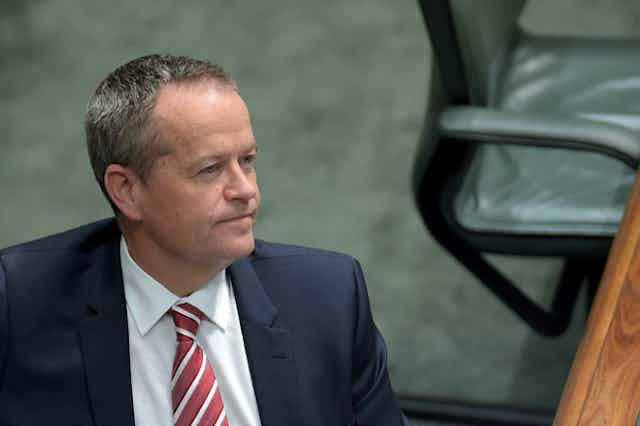After the most comprehensive review of school education funding for over 40 years, followed by an exhaustive Senate inquiry in 2014 – it looks like Gonski is once again back on the table.
Labor has announced it would commit to fully funding Gonski, with a reform package costing A$37.3 billion over the next decade. But is this actually what the Gonski review recommended?
Additional money recommended by the Gonski review was meant to go to schools with the most in need: Indigenous, rural and remote, disabled and socio-economically disadvantaged students.
Instead it has been left to the states and the Catholic and independent school systems to distribute this money.
Gonski timeline
The future of public education in Australia is at stake. Funding policies have for too long neglected the concept of need and foregrounded the principle of entitlement. This has led to increasing amounts of public money going to private schools, with a consequent expansion of that sector at the expense of public education.
Under current Coalition government policy, we have continued to see an increasingly privatised education system.
Previous federal minister Christopher Pyne is on the record as stating that “we have a particular responsibility for non-government schooling that we don’t have for government schooling.
"The emotional commitment within the federal government is to continue to have a direct relationship with the non-government schools sector. I think the states and territories would prefer that as well.”
The Liberal Party has consistently rejected the Gonski review conclusion that increased spending leads to improved education outcomes in relation to socio-economic disadvantage. Prime Minister Malcolm Turnbull recently stated: “Funding is important, but there is a lot more to it [improved student achievement]. The key element is teacher quality.”
The conservative side of politics believes there is no equity problem to address in Australian education. The Liberal Party relies on conservative researchers’ evidence denying any causal link between socioeconomic status and student academic outcomes.
The best-performing education systems are those that combine equity with quality. They give all children opportunities for a quality education.

Why the funding is needed
Educational failure imposes high costs on society. Poorly educated people limit economies’ capacity to produce, grow and innovate. School failure damages social cohesion and mobility, and imposes additional costs on public budgets to deal with the consequences – higher spending on public health and social support and greater criminality, among others.
For all these reasons, improving equity in education and reducing school failure should be a high priority in all OECD education policy agendas.
Federal Education Minister Simon Birmingham repeats the furphy that state and federal spending on schools grew by more than 100% in real terms between 1987-88 and 2011-12. This clever accounting includes the massive boost to school building programs that was part of the Labor government’s response to the world fiscal meltdown.
The National Reports on Schooling in Australia show that government spending per student in Australia was A$8,115 in 1999-2000 ($11,731 in 2012) and $13,544 in 2008-09 ($14,637 in 2012). That is a real increase of only 24.7%. Over the same period government expenditure on education as a percentage of total government expenditure in Australia fell from 14.2% to 12.9%.
According to World Bank figures, Australia’s spend on education as a proportion of GDP, around 5%, has remained constant over that time.
Yet Australia has gone backwards in absolute and relative terms, including in international literacy and numeracy rankings.
Over the past decade, the performance of Australian students in international assessments has declined at all levels of achievement compared to international benchmarks. At the same time we have witnessed a massive shift in federal and state funds to the private sector of schooling.
The proportion of Australia’s lowest-performing students are in danger of not meeting minimum standards of achievement.
Australia has a significant gap between its highest- and lowest-performing students; far greater than in many OECD countries. The link between low levels of achievement and educational disadvantage, particularly among students from low socioeconomic and Indigenous backgrounds, is well accepted by most researchers.
A fairer system?
It’s important to remember that this money comes from all taxpayers, including the 1.4 million workers on a minimum wage who are supporting well-funded private schools.
With 80% of disadvantaged children attending government schools around the country, it is therefore no surprise that these teachers are struggling to overcome generational poverty and disadvantage.
While Commonwealth funding for non-government schools rose from around $3.50 for each dollar spent on public schools to around $5 between 1997 and 2007, in the past decade government funding to independent schools has increased by 112%.
In fact, Canberra now gives more money to private schools than it does to universities – more than $36 billion in federal funds went to non-government schools in the period 2009-2013. Recent research predicts that most Catholic schools will soon receive more public money per student than public schools.
Federal government funding for high-fee private schools is six to ten times greater than the additional funding provided to disadvantaged schools.
Labor’s commitment to funding education
Despite being touted as “school funding reform”, the opposition’s announcement in fact merely maintained the status quo. What was needed was a bolder political ambition for a fairer system, one that doesn’t take from the poor to give to the rich.
But the goal of a fairer Australia, at least, has been hampered from the start.
Once the Gillard government committed to the Catholic and independent school lobbies that not one of their schools would lose a single dollar under the reforms, the opportunity for a fairer, genuine needs-based school funding system was lost.
We have to ask, can we remain a functioning democracy without a strong public education system?

